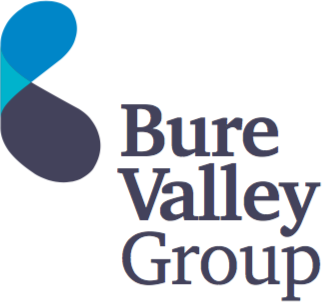A startup’s “offer” is crucial to its long-term success. It articulates the core benefits available to a user or customer (e.g. cheaper, faster international payments from a fintech).
An offer’s appeal – i.e. its “irresistibility” level – is key in determining sales volumes. If customers see an offer from a startup that they cannot refuse, it positions the business strongly for long-term growth and profitability.
For investors, discerning a startup’s offer is, therefore, vital when evaluating various early-stage opportunities for their portfolios. Below, we describe six core components to look out for in a startup’s digital offer to help investors as they consider different options.
We hope these insights are helpful. If you’d like to explore our early-stage investment projects and opportunities here at Bure Valley Group, please get in touch.
#1 Singular
Many startups try to address multiple customer “pain points” with a complex product range. The difficulty with this approach is that it is unclear.
Customers have limited time and attention to sift through vast amounts of information to discern what a startup’s offer “is about”.
By contrast, a startup with a singular offer – i.e. producing a single measurable outcome – is far easier for customers to understand.
More immediately, they see the offer’s value: “I see. If I use this product or service, it promises to more/less of something (e.g. revenue, stress).”
#2 Progression
When customers arrive at a startup’s offer, they occupy one position in their customer journey (Position A). They have a target destination for where they want to be, e.g. 20 lbs in lost weight or more qualified leads for their business (Position B).
However, they face friction between their current position and target destination. This might take the form of confusion about available solutions in the market, or a bad past experience with a provider.
Here, a startup’s offer needs to outline a clear path for the customer from Position A to B, clearly speaking to the friction and how they can remove it.
#3 Productised
Many startups are digitally based. Their services often seem intangible and difficult to visualise – e.g. SaaS providers and fintech.
Intangibility is a barrier to customers who struggle to “see” the offer. To address this, startups need to consider strategies to productise their offers.
Investors can evaluate offers by judging how much customers can “touch” and “feel” a startup’s offer. For instance, does the startup’s website show screenshots of its software in action, or does it just rely on text to describe how it works?
#4 Popularity
Is there a ready and hungry audience there waiting to consume the startup’s offer?
Startups are innovative by nature. This can sometimes lead them to try and needlessly invent new categories (or mysterious solutions) to address unknown problems within obscure niches.
Here, we enter the great debate about whether startups should enter a “red ocean” of competition or a “blue ocean” of opportunity.
Another way of looking at this is for startups to design their offers in ways that create blue “ponds” within red oceans.
Whilst challenging, this can be done if startups use technology, differentiation and creative marketing to stand out in competitive markets.
If startups can pull this off, it can be less risky for investors to get involved. This is because the market demand is clearly there for startups to harness. By contrast, a blue ocean represents a lot of unknowns, often with a high risk-reward ratio.
#5 Centralised
One of the great challenges for startups is developing the sheer amount of content needed to fuel their sales and marketing efforts.
Founders need content for lead magnets, email nurture sequences, social media posts, core web pages, landing pages, brochures, product catalogues and more.
It can be overwhelming even for a large business. However, a well-designed offer will address much of this work early on.
This can be achieved when a startup puts in the hard work at the beginning to lay a foundation with its product roadmap. In the process of designing this, much of the content needed for the assets above can write itself.
For instance, a product roadmap articulates the startup’s offer by:
- Identifying the product name, type, price and delivery timeline
- Stipulating the target personas
- Describing the attributes of an ideal customer/client and those of undesirables
- Explaining which measurable benefits the product will increase for customers, as well as the measurable “pain points” it will reduce
- Identifying the product’s “victory metrics”, the customer’s transition journey from Position A to B, and the ultimate outcome it achieves for customers.
- The core message of the product, which summarises these attributes in a succinct way
#6 Essential
Is the startup’s offer “nice to have” or indispensable for customers?
Naturally, the latter will be a more powerful offer – especially if it is “evergreen” and actively sought by customers.
Here, investors need to acknowledge that certain customer pain points are more important than others. For instance, a health tech startup will likely have a highly “essential” victory metric if it promises to help lower customer body fat.
By contrast, a startup focused on “wellness” is more vague in its offer. Its broadness makes it difficult to measure, and the product’s meaning is more obscure.
There are many other areas that we could explore regarding how to evaluate a startup’s offer. However, we hope this article has fuelled some inspiration as you survey your next candidates for your portfolio!
Want to speak to us about our early-stage opportunities here at our exclusive investor network? Get in touch today to explore our startup projects here at Bure Valley Group.


